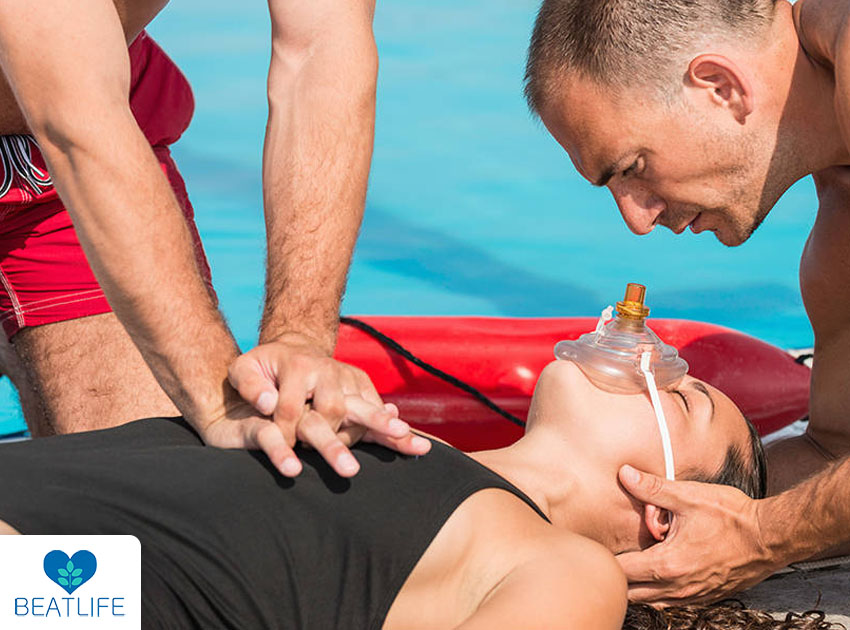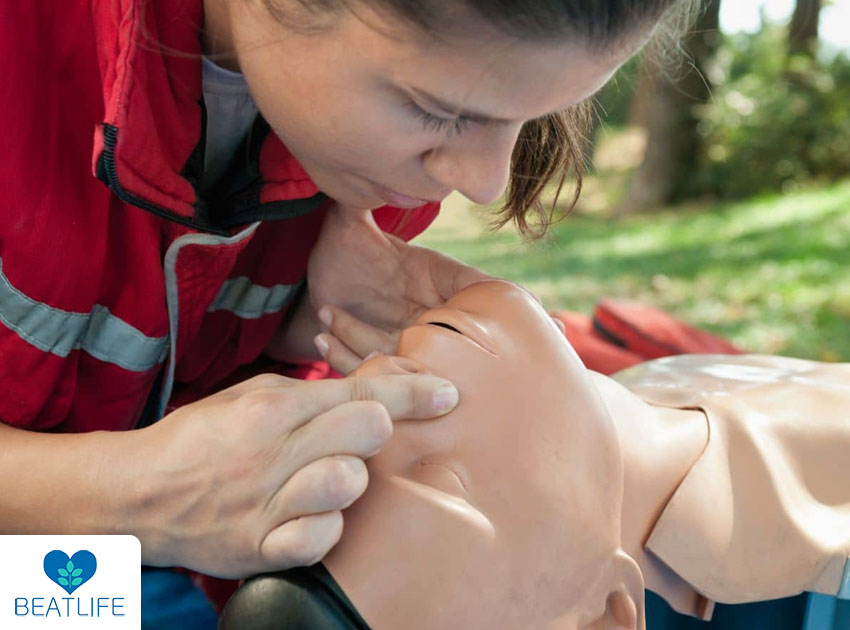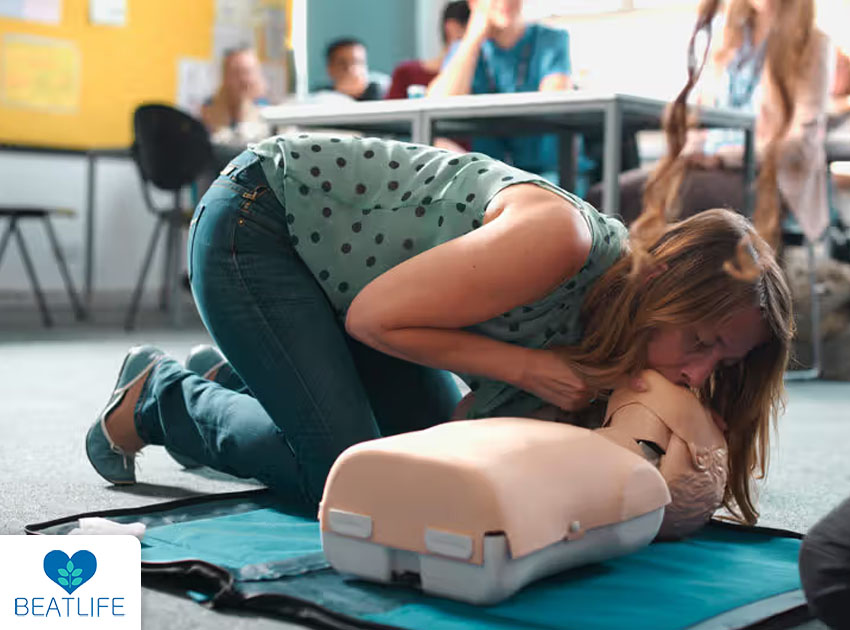Imagine finding yourself in a situation where someone suddenly collapses, struggling for breath. In such critical moments, knowing when and how to administer mouth-to-mouth rescue breaths can be the difference between life and death. This article will delve into the crucial indications for mouth-to-mouth rescue breaths, understand the role they play in basic life support (BLS), and address common misconceptions surrounding this life-saving technique.
Contents
- 1 Understanding Basic Life Support (BLS)
- 2 Indications for Mouth-to-Mouth Rescue Breaths
- 3 Steps to Administer Mouth-to-Mouth Rescue Breaths
- 4 Common Misconceptions
- 5 Importance of Training
- 6 The Role of Mouth-to-Mouth Rescue Breaths in Emergency Situations
- 7 Special Considerations
- 8 Public Awareness Campaigns
- 9 Tips for Effective Communication During Emergencies
- 10 Frequently Asked Questions (FAQs)
- 10.1 1. What are the signs that someone requires mouth-to-mouth rescue breaths?
- 10.2 2. Can mouth-to-mouth rescue breaths be harmful in certain situations?
- 10.3 3. How often should one renew CPR and BLS certification?
- 10.4 4. Are there any alternative methods to mouth-to-mouth rescue breaths?
- 10.5 5. What should be done if the victim regains consciousness during rescue breaths?
- 11 Conclusion
Understanding Basic Life Support (BLS)
Definition and Significance
Basic Life Support (BLS) is a fundamental set of actions to sustain life in individuals experiencing cardiac or respiratory arrest. It involves chest compressions and rescue breaths, with each component playing a pivotal role in maximizing the chances of survival.
Key Components of BLS
While chest compressions are widely recognized, rescue breaths are equally essential. These breaths provide vital oxygen to the victim’s lungs and bloodstream, preventing irreversible damage to vital organs.
Indications for Mouth-to-Mouth Rescue Breaths
Situations Requiring Immediate Action
Mouth-to-mouth rescue breaths are indicated when someone is unresponsive, not breathing, or only gasping for air. It is crucial to recognize these signs promptly and initiate the appropriate response.
Importance of Quick Response and Assessment
Time is of the essence in emergencies. Quick assessment and prompt initiation of mouth-to-mouth rescue breaths can significantly increase the likelihood of a positive outcome.

Steps to Administer Mouth-to-Mouth Rescue Breaths
Clearing the Airway
Before providing rescue breaths, ensure the victim’s airway is clear of obstructions. This simple step can make a significant difference in the effectiveness of the rescue breaths.
Proper Positioning of the Victim
Lay the victim on a flat surface, tilt their head backward, and lift the chin to open the airway. This optimal positioning facilitates the delivery of effective rescue breaths.
Providing Effective Breaths
Seal your mouth over the victim’s mouth and deliver two rescue breaths, each lasting about one second. Ensure visible chest rise with each breath, indicating successful airway ventilation.
Common Misconceptions
Debunking Myths Surrounding Mouth-to-Mouth Rescue Breaths
There are various misconceptions about the safety and efficacy of mouth-to-mouth rescue breaths. We will debunk these myths, addressing concerns and instilling confidence in individuals to perform this life-saving technique when needed.
Addressing Concerns and Building Confidence
Understanding the science behind mouth-to-mouth rescue breaths and dispelling fears is crucial in building confidence among potential rescuers. Training plays a significant role in addressing concerns and ensuring effective execution.

Importance of Training
Encouraging Individuals to Undergo CPR and BLS Training
While the instinct to help is innate, formal training enhances one’s ability to respond effectively in emergencies. Encourage individuals to undergo CPR and BLS training, equipping them with the skills and knowledge needed to save lives.
How Training Enhances the Effectiveness of Mouth-to-Mouth Rescue Breaths
Training goes beyond theoretical knowledge. It includes practical simulations, allowing individuals to experience real-life scenarios and gain confidence in administering mouth-to-mouth rescue breaths. Mention innovative tools like BEATLIFE CPRmeter, providing real-time feedback on the effectiveness of rescue breaths.
The Role of Mouth-to-Mouth Rescue Breaths in Emergency Situations
Link Between Timely Rescue Breaths and Survival Rates
Studies consistently show a direct correlation between the timely administration of rescue breaths and increased survival rates. Real-life examples underscore the pivotal role of mouth-to-mouth rescue breaths in emergencies.
Real-Life Scenarios Highlighting the Impact of Mouth-to-Mouth Rescue Breaths
Explore real-life cases where individuals trained in BLS made a difference by administering timely and effective mouth-to-mouth rescue breaths. These stories serve as powerful reminders of one person’s impact in an emergency.
Special Considerations
Tailoring Rescue Breaths for Different Age Groups
The approach to mouth-to-mouth rescue breaths may vary based on the victim’s age. Understanding these nuances ensures appropriate care for infants, children, adults, and older people.
Addressing Health Conditions That May Affect Rescue Breaths
Certain health conditions may complicate the administration of mouth-to-mouth rescue breaths. Recognizing and addressing these factors is crucial for adapting the technique to individual needs.
Public Awareness Campaigns
The Need for Ongoing Campaigns Promoting CPR and BLS Awareness
Public awareness campaigns are pivotal in disseminating information about the importance of CPR and BLS. Collaborating with healthcare organizations amplifies the reach of these campaigns, fostering a community of informed and empowered individuals.
Collaborations with Healthcare Organizations to Disseminate Information
We can leverage their expertise and resources to reach a broader audience by partnering with healthcare organizations. This collaboration enhances the impact of public awareness campaigns, leading to a more prepared and responsive community.

Tips for Effective Communication During Emergencies
Clear Instructions for Bystanders
In emergencies, clear and concise instructions are crucial. Empower bystanders with the knowledge to assess the situation and provide assistance until professional help arrives.
The Significance of Remaining Calm and Composed
Maintaining composure is challenging but essential. Calmness in the face of an emergency helps the victim and those providing assistance. Tips for staying composed can make a significant difference.
Frequently Asked Questions (FAQs)
1. What are the signs that someone requires mouth-to-mouth rescue breaths?
Look for unresponsiveness, absence of breathing, or gasping for air.
2. Can mouth-to-mouth rescue breaths be harmful in certain situations?
When done correctly, mouth-to-mouth rescue breaths are generally safe. However, adapt the technique based on the victim’s condition.
3. How often should one renew CPR and BLS certification?
Certification renewal frequency varies but is typically recommended every two years to stay updated on the latest guidelines.
4. Are there any alternative methods to mouth-to-mouth rescue breaths?
Hands-only CPR is an alternative, focusing solely on chest compressions without rescue breaths.
5. What should be done if the victim regains consciousness during rescue breaths?
Assess the victim’s responsiveness and breathing. Adjust your actions accordingly and seek medical attention if necessary.
Conclusion
In conclusion, understanding the indications for mouth-to-mouth rescue breaths is paramount for anyone wanting to be a proactive and capable emergency responder. This article has shed light on the importance of quick assessment, proper administration, and the role of training in enhancing the effectiveness of rescue breaths. By debunking myths, addressing concerns, and promoting public awareness, we contribute to a community that is not just informed but empowered to save lives.
Reviewed by Dr Jamshidi Mohammad Reza

